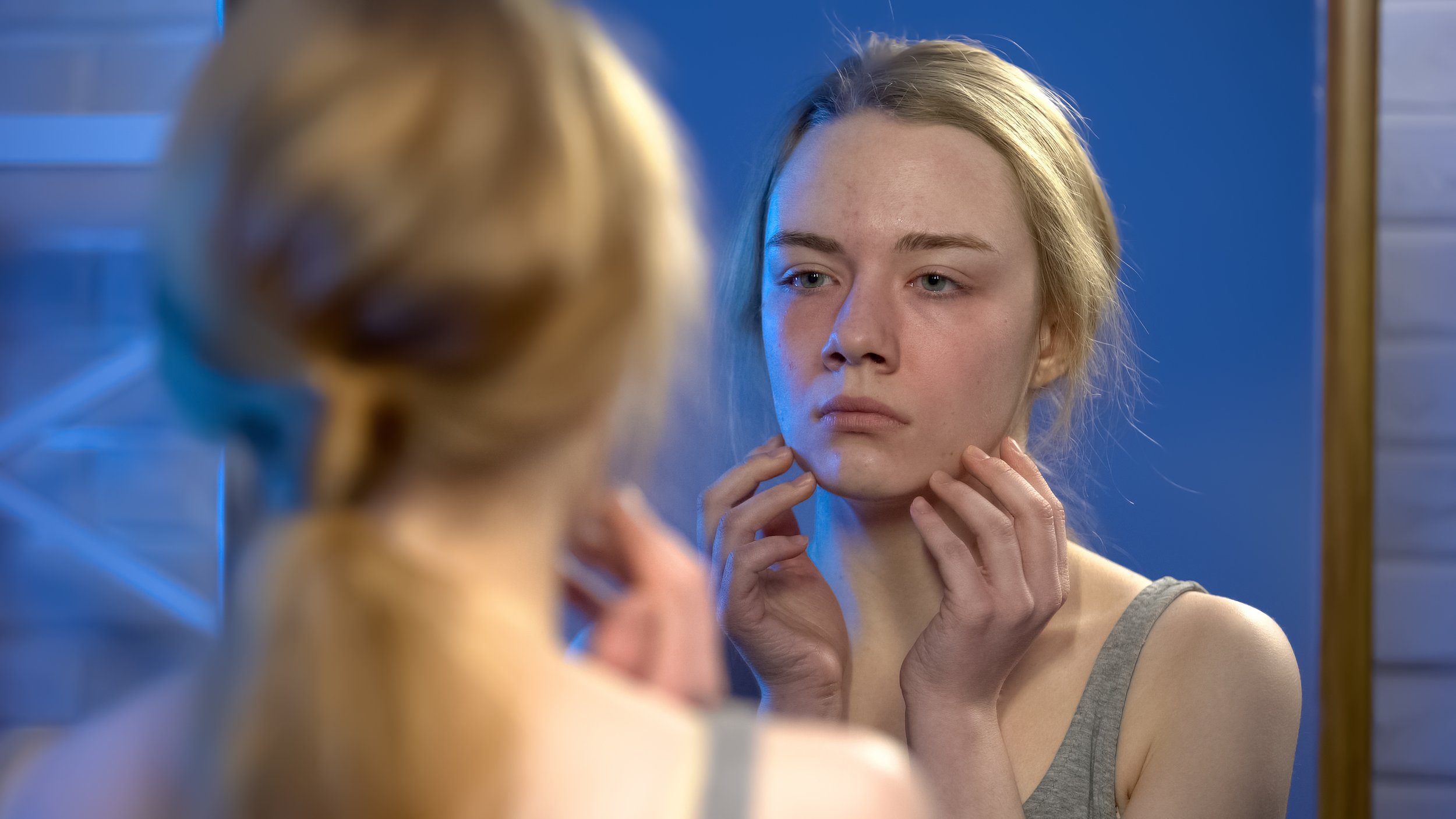Understanding and Overcoming Body Dysmorphic Disorder
My personal experience with body dysmorphia and what I recommend to others suffering from it.
Image by motortion via Adobe Stock
Wearing a crop top and cutoff jean shorts, the slender body of a twenty-something-year-old woman glistened beneath the shining sun. I watched as she jovially mingled with her friends at the craft beer festival we both attended.
Radiating in confidence, she flashed a captivating smile and made eye contact with me. I immediately redirected my gaze, hoping she didn’t notice me staring at her.
I know, I sound like such a creeper. But I was simply trying to understand. “What more must I do to attain a body like hers?” I asked myself in my usual self-deprecating voice.
For a good 15 years of my life, this scene of comparing my body to a stranger’s replayed itself nearly every time I attended a public outing. I’d find a girl near my age who had a “better” (i.e. thinner) body than mine and then chastise myself for being less disciplined than her.
In reality, I wasn’t seeing clearly.
I’d venture to guess that 95 percent of these “perfect” women I plucked from crowd after crowd either had bodies of the same size or bigger than mine. I was just too sick with body dysmorphic disorder to see it.
It was a cyclical charade of mind games, and I was both the victim and the perpetrator.
What Is Body Dysmorphic Disorder?
“Body dysmorphic disorder (BDD), also commonly known as body dysmorphia, is best described as an anxiety disorder (specifically, a type of obsessive-compulsive disorder) involving a belief that a certain body part or physical appearance is defective or “wrong.” A key to understanding what having a distorted body image can feel like is realizing that there’s a fundamental disconnect between reality and perception for those suffering from body dysmorphia.” — Amy Cirbus Ph.D, LMHC, LPC, Talkspace (2021).
The immense insecurity about your inadequate body part or appearance can be all-consuming. Day in and day out, it’s at the forefront of your mind, affecting how you think, feel, and behave.
Common behaviors associated with BDD
Having BDD often means you see an exaggerated version of your perceived body flaw, often as a result of the false or distorted narrative you’ve long repeated to yourself about it.
The paranoia tied to the “defective” or “not ideal” body part rarely escapes you. In turn, you may:
engage in incessant body-checking;
use makeup, clothing, or style your hair a certain way in an attempt to conceal the flaw;
engage in disordered eating or exercise behaviors to alter your physique;
undergo cosmetic surgery;
obsessively talk about your flawed feature(s);
analyze and comment on the bodies or body parts of others that you’re self-conscious about; or
Isolate yourself to avoid possible ridicule from others.
In my own experience, I often turned sideways and lifted my shirt up to see how far my stomach protruded. The body I saw in the mirror was thick and flabby — a very different body than the one others saw when they looked at me.
I also suffered from compulsive exercise as part of my ongoing quest to shrink my body. The problem with this distorted logic was that no weight — no matter how low — and no size — no matter how small — fully satisfied me.
In my unwell mind, I still wasn’t as thin as that one girl from that one thing that I saw that one time. It was a cyclical charade of mind games, and I was both the victim and the perpetrator.
Overcoming Body Dysmorphia
As with most mental disorders, there isn’t a one-size-fits-all approach to overcoming BDD, but here are some ways you can grow to accept the aspects of your body that cause you anxiety or disturbance.
Understand you’re not seeing yourself clearly
The beliefs you’ve instilled about how flawed you are have manifested into your reflection. You look into the mirror and see certain aspects of your body with an unclear mind and, thus, unclear eyes.
You may be thinking, “Nope, other people have bullied or mocked me for said body flaw — this isn’t just in my head.”
You make a valid point.
It’s within no one’s right to undermine your lived experience or send the message that “you’re just delirious and need to snap out of it.” You have good reason to feel pain from any rejection or ridicule you’ve endured.
As you reflect on any crude comments people have made about your body, also consider how those comments may be manipulating your portrayal of your body.
For instance, if someone comments on how long your hair is getting but you just got it cut a few days prior, a variety of thoughts might swirl through your head, such as:
Should I have gone shorter?
What would they have thought if they saw me before I got it cut?
This seems on the short side to me. Maybe it’s still too long?
This is an example of how our perceptions of reality can change based on the messages we receive and ruminate over. If you’ve told yourself over and over that your thighs are too big, it’s not unimaginable you will then see your thighs as too big.
Understand people don’t care about your appearance as much as you think
“You wouldn’t worry so much about what others think of you if you realized how seldom they do.” — Eleanor Roosevelt
The paranoia you walk around with as someone with body dysmorphia causes so much unnecessary suffering. You’re constantly worried others are noticing your perceived defect and are judging you for it.
Yes, people can be arseholes and do say cruel things, but most people either aren’t noticing your perceived flaw at all or at least not in the way you think.
To put this into perspective, think about something you’ve done or created that you’re passionate about. Once finished, you notice every little discrepancy or mistake you made. Examples:
Baking a loaf of homemade bread and believing it would’ve been perfect with just another 30–45 minutes of proofing time.
Painting a wall and not getting that one edge perfectly flush.
Giving a speech and forgetting to mention one of the 10 comments you had in your outline.
In none of these cases will anyone else notice your imperfect delivery (unless you point it out to them, that is). If they do notice it, odds are it will be in the most subtle, unconcerned way.
So, start challenging your desire to be perfect. People (especially those worth having in your life) aren’t expecting you to be.
Understand that obsessing over your appearance isn’t the solution
Directing so much energy toward checking or worrying about your body typically only adds to your suffering. It barricades you from doing the real work necessary to cultivate a more confident and content you.
Every time you look at the part of your that’s causing you distress, you’re strengthening its power over you. The message that “How this looks matters” gets reinforced, and only adds insult to injury.
You might be saying, “I can’t just stop checking it or thinking about it. The worrying, obsessing, comparing, self-criticizing, and concealing are automatic.” I can empathize with what you’re saying. I’ve been there, too. Read on.
Crowd in positive influences
Unless you have some unheard-of superpower that enables you to rewire your brain overnight, the thoughts and behaviors attached to your body dysmorphia will likely continue for an indefinite period of time. So, to start, rather than putting the focus on stopping those current behaviors, try adding in some new ones instead.
Something that really helped me and that’s helped my clients in eating disorder recovery is following influencers who have experienced a similar body insecurity as you. A quick Google search using the modifiable text “Influencers with [body insecurity]” can help you track down these amazing and positive forces.
Some I recommend:
Any of these people (to celebrate Health at Every Size)
@BIGNOSECHICK (celebrating the beauty of all kinds of noses)
Any of these people (influencers with skin conditions)
Peruse their websites and profiles. Listen to their stories and shared experiences. Leave comments. You may find that there’s not only a way to make peace with your body but also to celebrate it for its own, unique, and natural characteristics.
Find a therapist who specializes in treating BDD
If you have the means, seek help from a therapist who’s trained to diagnose and treat body dysmorphia. Ask them about their experience using therapeutic modalities like cognitive behavioral therapy (CBT) and acceptance and commitment therapy (ACT).
Cognitive behavioral therapy challenges you to change those automatic negative thoughts and assumptions you have about your body or body parts.
Acceptance and commitment therapy teaches you to expect, accept, and allow anxiety-provoking thoughts that arise so you can move through life without them completely impeding your experience or well-being.
I Survived BDD, and You Can Too
Surviving BDD was one of the most life-changing outcomes of my eating disorder recovery.
I can now go out in public without pinpointing a woman and comparing myself to her. I can put on my clothes without checking the bulge of my belly in the mirror. I can look at a photo of myself and base the quality of it not on how my body looks but on how well it captured the moment.
It took a good deal of time and a lot of work to get here, but I’m grateful every day I made my way to body acceptance. I believe if I got here after 15 years of suffering from BDD, you can too.


